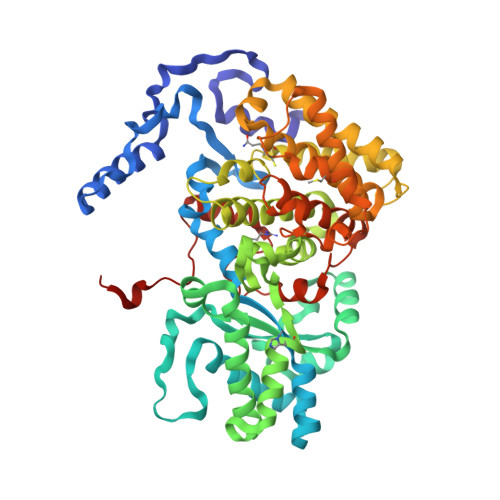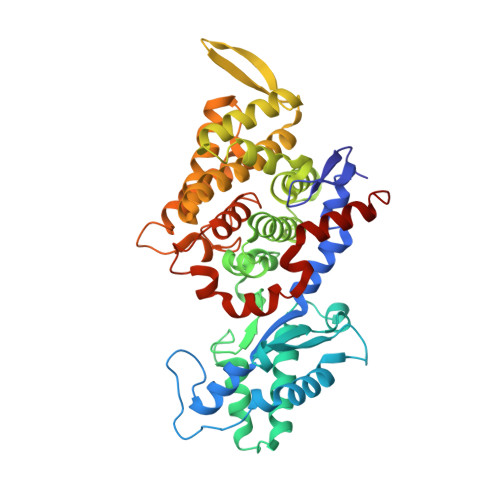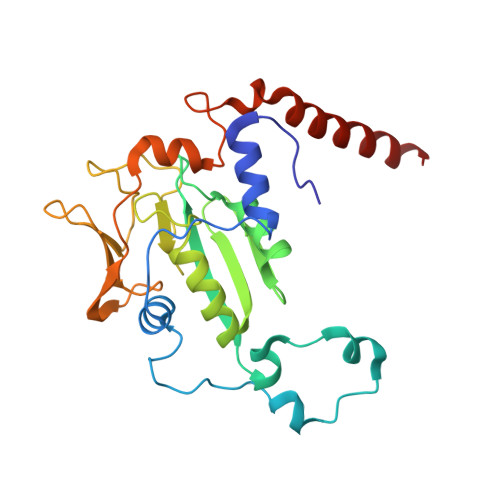On the Mechanism of Biological Methane Formation: Structural Evidence for Conformational Changes in Methyl-Coenzyme M Reductase Upon Substrate Binding
Grabarse, W., Mahlert, F., Duin, E.C., Goubeaud, M., Shima, S., Thauer, R.K., Lamzin, V., Ermler, U.(2001) J Mol Biol 309: 315
- PubMed: 11491299
- DOI: https://doi.org/10.1006/jmbi.2001.4647
- Primary Citation of Related Structures:
1HBM, 1HBN, 1HBO, 1HBU - PubMed Abstract:
Methyl-coenzyme M reductase (MCR) catalyzes the final reaction of the energy conserving pathway of methanogenic archaea in which methylcoenzyme M and coenzyme B are converted to methane and the heterodisulfide CoM-S-S-CoB. It operates under strictly anaerobic conditions and contains the nickel porphinoid F430 which is present in the nickel (I) oxidation state in the active enzyme. The known crystal structures of the inactive nickel (II) enzyme in complex with coenzyme M and coenzyme B (MCR-ox1-silent) and in complex with the heterodisulfide CoM-S-S-CoB (MCR-silent) were now refined at 1.16 A and 1.8 A resolution, respectively. The atomic resolution structure of MCR-ox1-silent describes the exact geometry of the cofactor F430, of the active site residues and of the modified amino acid residues. Moreover, the observation of 18 Mg2+ and 9 Na+ ions at the protein surface of the 300 kDa enzyme specifies typical constituents of binding sites for either ion. The MCR-silent and MCR-ox1-silent structures differed in the occupancy of bound water molecules near the active site indicating that a water chain is involved in the replenishment of the active site with water molecules. The structure of the novel enzyme state MCR-red1-silent at 1.8 A resolution revealed an active site only partially occupied by coenzyme M and coenzyme B. Increased flexibility and distinct alternate conformations were observed near the active site and the substrate channel. The electron density of the MCR-red1-silent state aerobically co-crystallized with coenzyme M displayed a fully occupied coenzyme M-binding site with no alternate conformations. Therefore, the structure was very similar to the MCR-ox1-silent state. As a consequence, the binding of coenzyme M induced specific conformational changes that postulate a molecular mechanism by which the enzyme ensures that methylcoenzyme M enters the substrate channel prior to coenzyme B as required by the active-site geometry. The three different enzymatically inactive enzyme states are discussed with respect to their enzymatically active precursors and with respect to the catalytic mechanism.
Organizational Affiliation:
Max-Planck-Institut für Biophysik, Frankfurt, Germany.





























